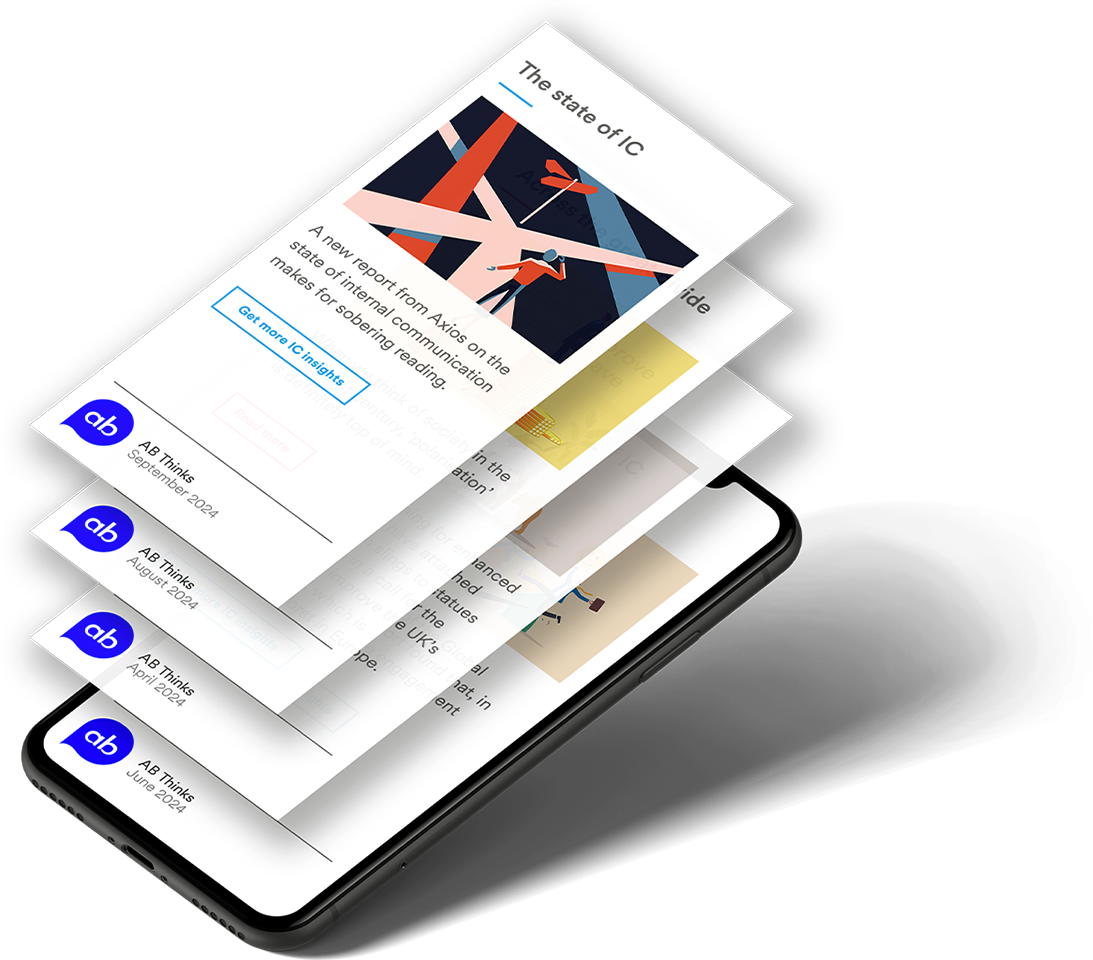These are fascinating times for communicators and publishers. Not only are the boundaries between internal and external communications rapidly blurring and overlapping, the ways in which we communicate with one another are becoming ever more interlinked.
The big driver for this change is, of course, digital technology and there are some great examples of how digital is making us reassess how we communicate in print and even face-to-face. Within organisations, once-distinct analogue (not involving computer technology) and digital communications channels are now merging together. So what should we expect next?
Bringing water cooler conversations to the intranet
The impact of digital on organisations has been huge. Take a Town Hall meeting – a traditional analogue means of communicating to the wider business. Previously, we might have expected the audience to wander back to their desks afterwards, never to hear from them again.
And yet, with ‘employee voice’ firmly on the agenda of many communicators, we’re starting to see more innovative ways to broaden and extend the conversation. I’ve heard some great anecdotes about combining Town Halls and Yammer, and of bringing Facebook Workplace into the mix to further the conversation and engage workers who are out and about. In a world where face-to-face is still most people’s preferred means of communications, this convergence could solve some of the challenges we hear and bring digital into the mix as the solution to a known business challenge.
Augmented reality bringing print to life
Just the other week, CIPR published the latest issue of its member magazine Influence. The bold pink cover clearly declared ‘This is a video’ and readers were asked to download an app, hold it over the cover to launch a video that brought the contents page to life. While this might not be new in advertising or consumer PR, it’s not something I’ve seen a great deal of in IC. As someone with a print journalism background, I love the idea of merging this kind of technology with something AB has been doing for more than 50 years. We’ve experimented with augmented reality for one or two clients but the possibilities are huge and won’t cost as much as people might think, so I’d love us to do more of this.
Robots writing… what about opinion?
I recently read a story written by a robot next to one written by a human – the difference was easy to spot. But the recent, 400th issue of Stylist magazine, which was taken over by robots to mark the occasion, made me think again. If a robot can write in your style, bringing in opinion and subjective elements then perhaps us journalists will indeed be replaced by robots in the future. And yet, if I could use voice technology to share my thoughts and insights for a story, and then have that written up in my own language, tone and style by a robot, then surely that time saving element is actually a good thing?
The future of the workplace can never be certain and at AB’s last industry event our head of digital, Mario Theodorou, talked about the possibilities that may arise in a world of ever-present data and technology. Like Mario, I’m keen to embrace those opportunities and, for now, that means not just thinking of analogue or digital channels in isolation, but as part of a richer, more inspiring and interesting channels mix than ever before.



